-
Hotel, Lodge, Tea House
-
Private Car/Bus
-
Difficult
-
Full board while on trekking
-
8091m
-
Expedition
-
8-12 Pax
-
Kathmandu, Nepal
Overview
Introduction
Annapurna 8091m is the thirteen highest mountain in the world. Annapurna is a Sanskrit name which literally means “full of food” but is normally translated as Goddess of the Harvests. This mountain section is a 55 km-long massif bounded by the Kali Gandaki Gorge on the west, the Marshyangdi River on the north and east, and Pokhara Valley on the south. The four summits with the entire massif of Annapurna form the northern barrier of Pokhara Valley. The main summit stands to the west of the Annapurna Sanctuary. The other major peaks on the Annapurna range are Annapurna II (7937 m), Annapurna III (7555 m), Annapurna IV (7525 m), Gangapurna (7455 m) and Annapurna South (7219 m).
The Annapurna peaks are among the world’s most dangerous mountains to climb. Annapurna 8091meter high was first climbed by a French expedition 1950 lead by Maurice Harzog. The entire massif and surrounding area are protected within the 7,629 km2 Annapurna Conservation Area, the first and largest conservation area in Nepal.
Outline Itinerary
Day 01: Arrive in Kathmandu (1320m)
Day 02-03: Expedition Document Application, Preparation, and Briefing for the Expedition
DAY 04: DRIVE TO POKHARA TO BENI
Day 5: Drive to Lete
Day 06: Trek Lete to Jungle Camp
Day 8: Trek to Miristi Khola
Day 09: Trek to Annapurna Base Camp
DAY 10–43: CLIMBING PERIOD OF ANNAPURNA 1 (8091M)
Day 44: Trek to Miristi Khola
Day 45: Trek to the Jungle Camp
Day 46: Trek to Lete
Day 47: Drive Lete to Beni to Pokhara
DAY 48: FLY FROM POKHARA TO KATHMANDU
Day 49: Rest and Shopping in Kathmandu
Day 50: Expedition ends, farewell, and departure
Trip Highlights
- Latitude: 270 51' 42’’ Longitude: 270 51' 42''
- The commercial accent to summit is from Northwest Ridge. Infamous for avalanches, weaker ice en-route and cracked glaciers makes it much riskier.
- Camp 1: Steeper accent yet a moderate climb for the professional climber.
- Camp 2: The climb from Camp 1 to Camp 2 is the most serious and challenging climb. This steeper climbing is vulnerable to avalanches, falling ice and high altitude makes it even challenging.
- Camp 3: Reaching Camp 3 needs few directed climb though seracs using fixed ropes till summit.
Itinerary
Arrive Kathmandu & Transfer to Hotel
Kathmandu, Prepare expedition
Kathmandu – Briefing in Ministry
Drive to Pokhara – Beni & Galeshowe
Galeshor – Tatopani
Tatopani – Ghasa
Ghasa to Lete and River side
River side to Jungle camp
Jungle camp to Miristi Khola
Miristi Khala – Annapurna North Base camp
Climbing Peried of Annapurna 1 (8091m)
Annapurna Base camp to Miristi Khola
Miristi Khola – Jungle Camp
Jungle Camp to Lete
Late to Tatopani
Tatopani – Beni
Beni to Pokhara by drive
Pokhara
Drive to fly to Kathmandu
Kathmandu
Final Departure
Cost
Cost Included
- 5 nights of accommodation in Kathmandu with bed and breakfast (3-star hotel)
- Permit fee for Annapurna 1 (8091m) Expedition
- Food for the Trekking and Expedition Period
- Staff: base camp guide, cook, cook helper
- Drive Kathmandu—Pokhara and Beni
- Porters from Galeshor to Annapurna North Base Camp
- Equipment allowance, daily allowance for liaison officer, and expedition crew
- Insurance for Nepalese expedition crews
- 1 tent for 1 person for the expedition
- Mat, dining tent, toilet tent, mess tent, store tent, table, and chairs for trekking for the expedition
- Local transportation in Kathmandu (airport-hotel-airport)
- Emergency Oxygen: Mask and Regulator
- Satellite phone (pay calls)
- Well dinner
Cost Excluded
- Personal equipment for climbing and trekking
- Personal and medical insurance for expedition
- Climbing food, gas, and stove above base camp
- Lunch and dinner in Kathmandu
- Emergency rescue evacuation by helicopter in case needed
- Walki Takie Permit and Satellite Phone Permit
- Oxygen and Mask Regulator for Climbing
- Personal expenses
- Bar bills and beverages
Additional Info
Extra Services
• Climbing sherpa: USD 2500
• Oxygen Bottles and Mask Set: US$ 350 per bottle (4 Liters
• US$ 250 per mask set. Includes Top 0out mask and regulator
Accommodation for this Expedition:
Trek With Domi provides two kinds of accommodation during Annapurna expedition. At Kathmandu, we provide five star hotel rooms with breakfast twin sharing base. During the trek to base camp, we provide nice lodge or guest house room with common toilet and bath twin sharing base. If you need a Single room we will charge extra $500 (Kathmandu and trek) but high season not so easy to get single room on the way Everest Region.
Food:
Annapurna Expedition, Trek With Domi. Ltd provides different kind of food like Nepali, Continental and Indian with tea and coffee. We provide welcome dinner Nepali cousin with Nepali culture dance and farewell dinner at K2 steak house (best steak in Kathmandu). Breakfast Kathmandu hotel provide a lot of items you can choose yourself and other guest house you can choose items in the menu with tea and coffee.
Physical Requirements:
Trek With Domi, Dhaulagiri expedition is supper difficult trip basically hikers have to hike per day 4 to 5 hours with daypack except some days are longer hour than 11 to 14. High altitude hike anyway need energy and experience, we have many acclimatization day that absolutely help for your altitude fitness, have a positive attitude, self-confidence and physically powerful determination, and we can achieve the trek successfully. If Around month jogging regularly before this trip is a great idea to improve our power and performance. Past glacier hiking experience and climbing three or four 6000m to 7000m peaks would be a great advantage with climbing technical skill is required for this trip. Before booking this trip it is a great idea to consult with your doctor and if you have any disease better inform us.
Best Time to climb Annapurna:
We have two best seasons in the year like summer, autumn and spring, summer and Autumn best month is June to December and spring best month is mid February to May this three seasons are the best seasons for this trek because of the weather is fine and warm with perfect views but the nights are chilly and can drop to freezing level in higher altitude.
Expedition Checklist
Footwear:
- Climbing boots: Scarpa Phantom 8000, La Sportiva Olyumpus Mons, Millet Everest One Sports, Kayland 8000.
- Cold weather boots for base camp: They should be insulated boots. Sorel or Baffin.
- Running shoes and/or trail shoes: For travel & easy walking.
- Sport sandals: Tevas, Chacos or Crocs are great for shower day, visiting Monasteries and relaxing during the trek.
- Lightweight hiking boots: For trekking to Base Camp. Leather or fabric/leather with a sturdy mid-sole and vibram sole.
- Gaiters: For use with light hiking boots, short and simple are better, such as Outdoor Research’s Rocky Mountain Low Gaiters.
- Booties: Down or synthetic, any brand with thick foam soles is recommended.
- Lightweight socks: Three to four pairs synthetic/wool blend (Fox River, Patagonia, Smartwool).
- Midweight / heavy socks: Three to four pairs synthetic/wool blend (Fox River, Patagonia, Smartwool).
- Liner socks: Three to four pairs Capeline or silk.
Clothing:
- Lightweight long underwear top: (Patagonia Capilene, REI, Mountain Equipment Co-op).
- Expedition weight long underwear tops: Zip T- neck design is good. Light colors are better for tops because they are cooler when hiking in direct sunlight and just as warm as dark colors when worn underneath other layers. (Patagonia, North Face, Mountain Hardwear).
- Lightweight long underwear bottoms: (Patagonia Capilene, REI, Mountain Equipment Co-op)
- Expedition weight underwear bottoms: Dark colors are preferable because they do not show dirt. (Patagonia, REI, Mountain Equipment Co-op).
- Briefs: Four pairs synthetic or cotton, running shorts also work well for underwear.
- Short-sleeved shirts: Two synthetic; most nylon running shirts or athletic shirts work. (North Face, Patagonia).
- Jacket synthetic or fleece: Synthetic insulated jackets or pullovers are a great alternative to fleece because they are lighter and more compressible. Primaloft type fill or Polartec 100 or 200 fleece is recommended. (Wild Things Primaloft, Patagonia, Outdoor Research)
- Synthetic insulated pants: Primaloft or Polargard HV fill with full side zips are recommended. Mountain Hardwear Compressor pants are an example. An acceptable alternative are fleece pants Polartec 100 or 200, but they are bulky, heavier and less versatile.
- Down suit: The best option for Everest summit day. Plan to wear very little underneath. (North Face).
- Down insulated jacket w/ hood: For Base Camp, the trek and lower camps on the mountain. (The North Face, Mountain Hardwear).
- Down pants: These are an option in addition to prima loft pants, can be useful at higher camps.
- Waterproof breathable jacket & pants: Ideally the jacket will have a hood and the pants will have full-length side zips. Bibs work well high on the mountain, but are often too hot and bulky at lower elevations. Gore-Tex XCR and H2NO fabrics are lightweight. (ArcTeryx, Patagonia, Mountain Hardwear).
- Wind shirts / light shell jacket: Light colors are preferred for comfort on hot days on the glacier.
- One piece climbing shell (optional): One piece shell such as Arcteryx Alpha suit.
- Head & Hand Gear
- Liner glove: lightweight synthetic (Patagonia or any brand of PowerStretch).
- Wind stopper fleece gloves: Two pairs (any brand of Wind stopper fleece).
- Insulated climbing gloves: Black Diamond Guide Gloves
- Mittens with liners: Two pairs, one for summit day (Outdoor Research Alti Mitts) and a utility pair of mittens for hard use in the icefall (Outdoor Research Expedition Mitts with fleece liners).
- Bandanna: Two or three traditional cotton style.
- Sun hat: Any lightweight hat with a good brim or visor. (Berg Adventures Ball Cap).
- Wool or fleece hat: Bring two, one lightweight, one heavier. Any brand of warm hat that can go over ears.
- Balaclava: One heavy weight and one light weight. Some people layer a very thin Capilene Balaclava under a thicker fleece one.
- Face mask: Optional, another good option is a neck gaiter/cozy.
Accessories
- Sunglasses: One pair high quality 100% UV, 100%IR, for travel and lower elevations.
- Glacier glasses: One pair high quality 100% UV, 100%IR min 80% light reduction, side shields are optional, but size and shape of lens should offer maximum protection from bright light on snow.
- Ski goggles: Test to assure a good fit on your face. Smaller goggles will likely work better with your oxygen mask.
- Headlamp w/ spare bulb: Bring two AA or AAA battery powered units (Petzl or Black Diamond)
- Spare batteries: For headlamp and other gadgets you bring. We like lithium AA’s and AAA’s and find they are worth the extra expense for cold expedition conditions.
Climbing Equipment
- Ice axe: General mountaineering axe, mountaineering “walking” length, 60 – 80 cm length, depending on your height. Shaft should not have a rubber grip. You will need a leash to attach axe to you harness not a “wrist loop”. Bring a commercial leash designed for glacier travel or 6 ft of 9/16 inch webbing and we will help you construct one (Grivel or Black Diamond).
- Crampons: 12 point step-in, some climbers bring two, but this is likely not necessary and we can have replacements sent from Namche (Grivel or Black Diamond).
- Harness: Alpine style, you should not have to step through leg loops to put it on and off, lightweight, fully adjustable (Black Diamond).
- Carabiners: Two large locking “pear” shaped, four oval-shaped (Black Diamond, Petzl).
- Webbing: 20 feet 3/16 “Supertape” – used for constructing leashes.
- Perlon cord: 20 feet of 6mm perlon cord, also known as accessory cord in climbing stores.
- Ascenders: You will need two (Petzl or Black Diamond).
- Rappel device: ATC, Figure 8 or similar (Black Diamond).
Camping Gear
- Backpack: Top opening mountaineer’s rucksack style is best. Avoid large zipper openings and excessive outside pockets. Larger packs are better than smaller, because they are easier to pack with cold hands and they distribute loads more effectively. Wild Things “Andinista” has been a favorite for years. It is ideal for the trek and all the climbing you will do. Arc’teryx and Osprey also have good lightweight packs.
- Day pack: Should be simple, useful for airline carry on, the trek in and short jaunts around Base Camp.
- Two Sleeping bags: -40C/-30F Down 800 fill (Western Mountaineering, Mountain Hardwear). Your second bag can be -20C/-5F. One bag stays on the mountain and the other at Base Camp. Your larger bag may be the one that stays at Base Camp; higher on the mountain you will share tents and you will be more concerned with bulk and weight.
- Compression stuff sacks: To reduce the volume of sleeping bags and clothes. There are a variety of lightweight sacks now available (Outdoor Research).
- Sleeping pad: Inflating, full-length (Therm-a-rest).
- Foam pad: Your sleeping pads stay on the mountain. At Base Camp you will have a Nepalese mattress, so you do not need a second sleeping pad set (Ridgerest).
- Water bottles: Two 1 liter, leak-proof wide-mouth (Nalgene).
- Lightweight steel thermal bottle: One or two. One liter size. (Nissan, Thermos).
- Pee bottle: Two 1 quart (1 liter), leak-proof wide-mouth, one for Base Camp and the other for high camp (Nalgene).
- Pee Funnel for Women: (Freshette).
- Pack towel: Medium size, do not bring “terrycloth”, bandanas work in a pinch (Pac Towel).
- Trekking poles: Should extend and shorten (Leki 3-section, Black Diamond).
- Swiss army knife/multitool: Remember not to leave in carry-on bags for any international or domestic flight.
- Large mug, plastic bowl, fork and spoon: For Camp 1 and Camp 3. Bowl and mug should be large.
- Medical & Personal
- Sunscreen: SPF 30 or higher, non-oily (Dermatone or L’Oreal).
- Lipscreen: SPF 30 or higher, any brand.
- Toiletry kit: Toothbrush, toothpaste, skin lotion, alcohol-based hand sanitizer, soap, comb/brush, shave kit, (bring travel size bottles to keep your kit small).
- First-aid kit: Ibuprofen/Aspirin, assorted band-aids, moleskin, Neosporin-type suave, small gauze pad, roll of adhesive tape, tweezers, safety pins. Include any prescription travel meds that might be prescribed by your doctor (antibiotics, Diamox, sleep aids).
- Water purification tablets: Such as Potable Aqua brand iodine tablets. You will be given plenty of purified water during your trek, but one bottle of backup purification tablets is always a good idea for your travels. They are especially useful in hotels on your way to Nepal. You should not drink untreated tap water anywhere in Asia and bottled water in some rare cases might not be available.
- Zip-loc bags: Always useful, and not available in Nepal. We especially like the large storage size for organization and storage at Base Camp.
- Baby wipes or wet towels
- Ear plugs: Very useful in noisy lodges and tents. Available in most hardware stores and drug stores.
Travel Items
- Expedition duffel bag: Two large, 8000+ cubic inches. Light colors are better for labeling with your name (The North Face duffel, Wild Things “Burro Bag”).
- Small travel bag: Optional. Useful for storing things in Kathmandu, most soft sided ‘carry on’ type bags work well. You might also use an extra-large stuff sack (The North Face, Patagonia).
- Nylon stuff sacks: Several different sizes, light colors preferable for labeling.
- Lightweight long sleeve shirt: cotton, comfortable.
- Hiking pants and/or skirt/sarong: One or two (“Supplex” is good material).
- Lightweight pants: One pair (any brand Supplex or “stretch woven” pant).

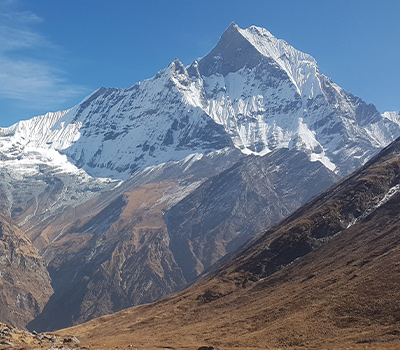
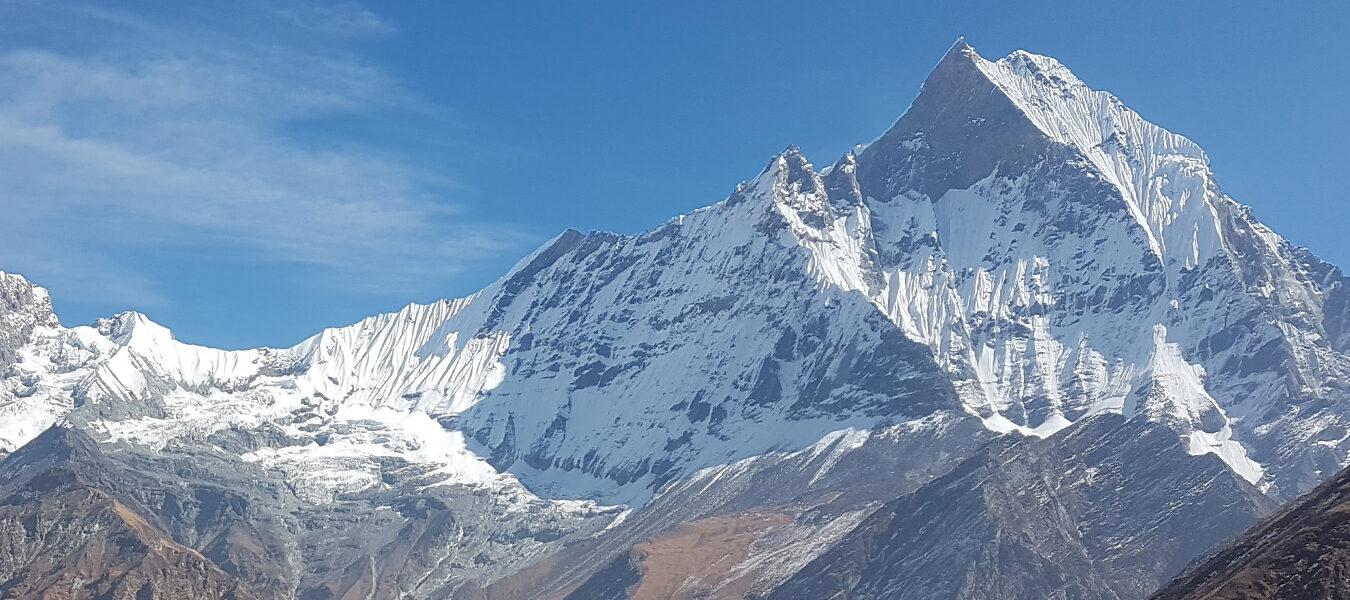
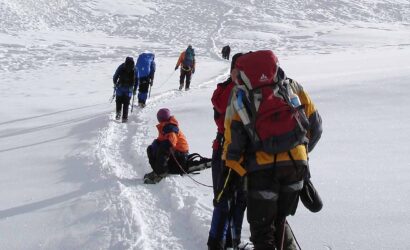
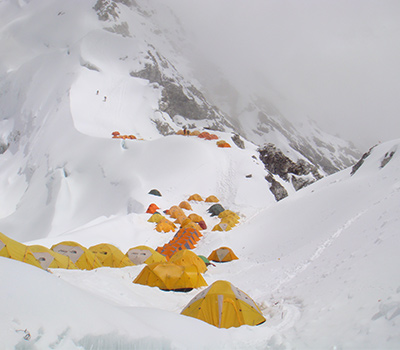
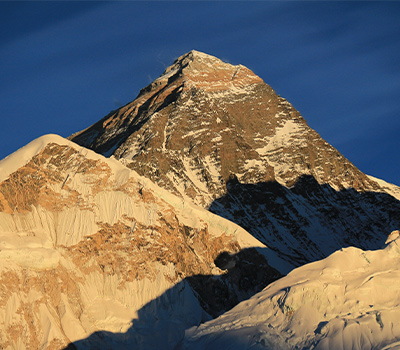
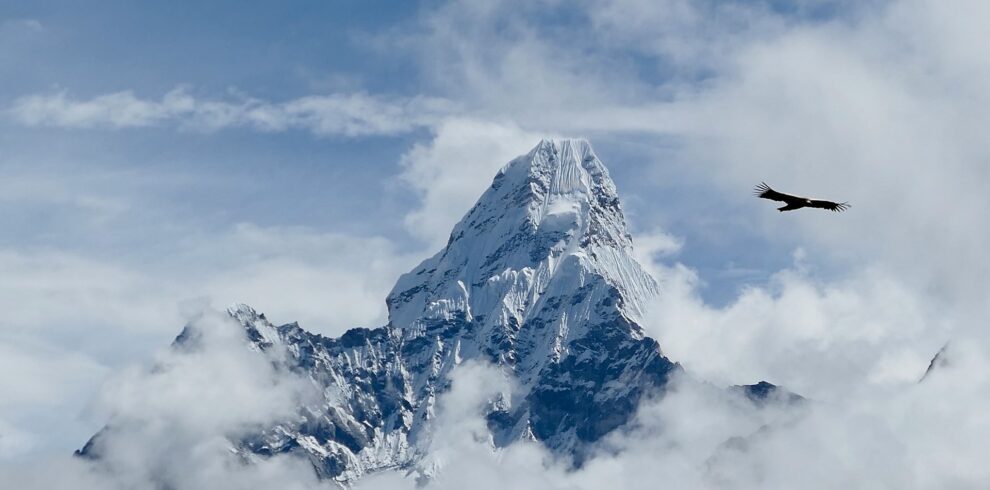
Write a Review